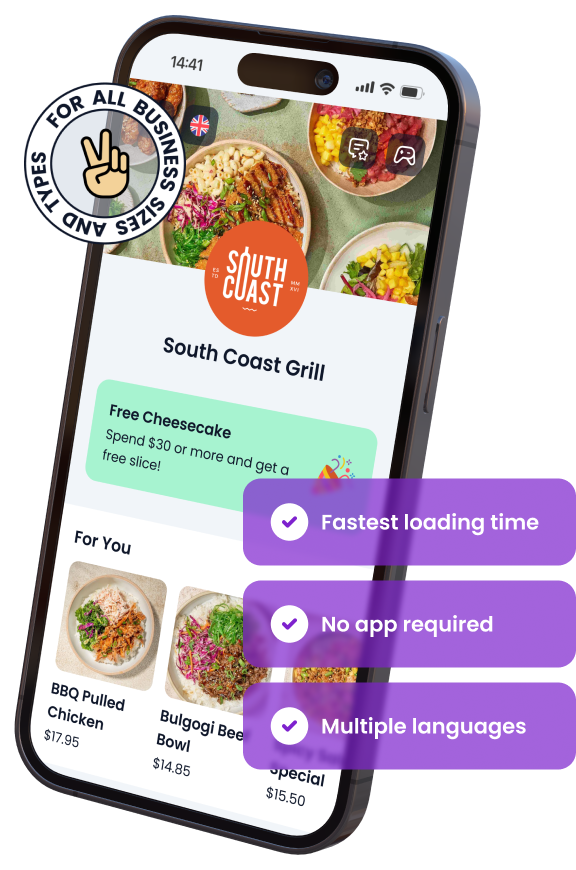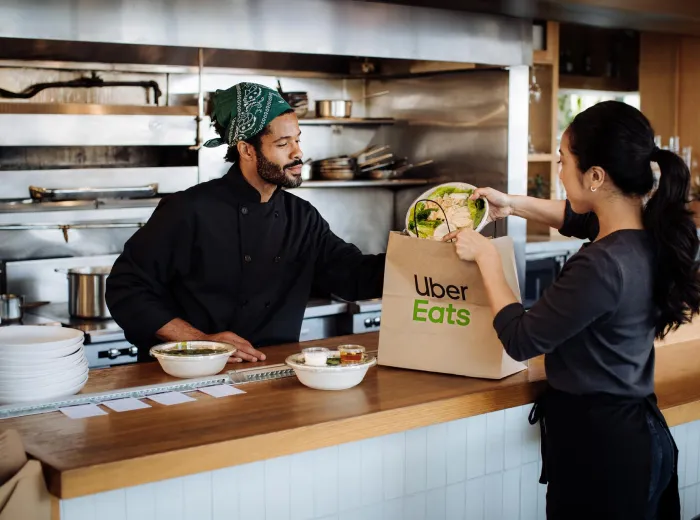

12 Steps to Take Before Opening a Restaurant in Kentucky
Opening a restaurant in Kentucky can be an exciting venture, blending your culinary passion with the opportunity to serve a diverse and vibrant community. Known for its rich culinary traditions and thriving food scene, Kentucky offers a promising market for aspiring restaurateurs. However, turning your dream into a successful business requires more than just a great idea—it demands careful planning, strategic decision-making, and compliance with state-specific regulations.
From securing financing to designing a welcoming space and crafting a menu that resonates with local tastes, the process involves numerous critical steps. In Kentucky, factors such as understanding local dining trends, leveraging community connections, and navigating state and county-level permits can significantly influence your restaurant’s success.
This comprehensive guide will walk you through each stage of the journey, providing actionable insights and practical tips to help you launch and sustain a thriving restaurant in the Bluegrass State. Whether you’re aiming to open a casual diner, a fine-dining establishment, or a farm-to-table eatery, the following steps will set you on the path to success.
Research and Planning
Every successful restaurant begins with a strong foundation of research and careful planning. Understanding the local market, defining a clear concept, and assessing feasibility are essential first steps. These efforts not only help you identify potential challenges but also provide a roadmap to guide your decision-making process.
Study Kentucky’s Restaurant Market
To thrive in Kentucky’s restaurant industry, you need a deep understanding of the local market. Researching dining trends and consumer preferences ensures that your concept aligns with what diners are looking for.
- Identify Popular Dining Trends:
- Research Kentucky’s culinary preferences, such as interest in Southern cuisine, bourbon pairings, or farm-to-table offerings.
- Stay updated on emerging food trends, such as plant-based options or fusion cuisine.
- Analyze Customer Demographics:
- Study the local population’s age, income levels, and dining habits.
- Assess how these factors influence their choice of restaurants.
- Evaluate Competitor Performance:
- Visit restaurants in your area to understand what works and what doesn’t.
- Look at online reviews to identify common strengths and weaknesses of competitors.
By thoroughly studying the market, you can position your restaurant to fill gaps or offer unique value that sets it apart.
Define Your Restaurant Concept
Your restaurant’s concept is its identity and will guide everything from menu creation to interior design. Developing a well-defined concept is key to attracting and retaining your target audience.
- Consider These Key Elements:
- Cuisine: Decide what type of food you’ll serve, such as Southern comfort dishes or international flavors.
- Ambiance: Will your restaurant be casual, upscale, or family-friendly?
- Target Audience: Define who your ideal customers are—young professionals, families, or tourists.
- Research Concept Viability:
- Conduct surveys or focus groups to gather feedback on your concept idea.
- Analyze whether your concept resonates with the local market.
A clear concept ensures that every element of your restaurant aligns with your vision and appeals to your intended audience.
Conduct a Feasibility Study
Before committing resources, it’s crucial to assess whether your restaurant idea is financially and logistically feasible. A thorough feasibility study will help you evaluate costs, risks, and potential rewards.
- Key Components of a Feasibility Study:
- Startup Costs: Estimate expenses for leasing, equipment, and initial inventory.
- Operational Costs: Calculate monthly expenses such as labor, utilities, and supplies.
- Revenue Projections: Develop realistic sales forecasts based on market research.
- Competitive Analysis:
- Identify direct competitors and assess their strengths and weaknesses.
- Determine what unique value your restaurant can bring to the market.
Completing a feasibility study gives you a clear picture of what it will take to succeed and ensures you are prepared for the financial and operational realities of running a restaurant in Kentucky.
Secure Financing and Budgeting
Securing the necessary funds and establishing a detailed budget are crucial steps in turning your restaurant idea into a reality. A strong financial plan ensures that you can cover startup costs, manage ongoing expenses, and position your restaurant for long-term success.
Create a Detailed Business Plan
A well-crafted business plan is essential for securing financing and guiding your restaurant’s operations. This document should outline your goals, strategies, and financial projections in detail.
- Key Sections to Include:
- Executive Summary: Provide an overview of your concept, mission, and vision.
- Market Analysis: Present your research on customer demographics and competitors.
- Operational Plan: Describe your menu, staff structure, and daily operations.
- Financial Plan: Include detailed budgets, cash flow projections, and expected revenue.
- Why a Business Plan Matters:
- It demonstrates your preparedness and professionalism to potential investors or lenders.
- It serves as a roadmap, helping you stay focused and organized during the startup process.
By developing a thorough business plan, you can identify potential challenges early and ensure that your restaurant starts on solid financial footing.
Explore Financing Options
Securing the funds to open a restaurant can be challenging, but there are several financing options available. Choosing the right one depends on your financial situation and business needs.
- Common Financing Methods:
- Personal Savings: Using your own funds can give you more control over your business but may involve higher personal risk.
- Bank Loans: Traditional loans are a popular choice; ensure you have a solid credit history and a detailed business plan.
- Investors: Partnering with investors can provide significant capital but may involve sharing ownership or profits.
- Grants and Incentives: Research local or state-level programs offering financial support to small businesses.
- Tips for Securing Financing:
- Prepare a compelling pitch that highlights your concept and market research.
- Present realistic financial projections to build confidence in your plan.
Exploring diverse financing options allows you to find the best solution for your needs while ensuring your restaurant has the resources to thrive.
Set a Realistic Budget
Creating a realistic budget helps you allocate resources wisely and avoid financial pitfalls. Understanding where your money will go is essential to controlling costs.
- What to Include in Your Budget:
- Startup Costs:
- Lease or property purchase.
- Equipment and furniture purchases.
- Initial inventory and supplies.
- Operational Costs:
- Monthly rent and utilities.
- Salaries and wages.
- Marketing and promotional expenses.
- Startup Costs:
- Budgeting Tips:
- Leave room for unexpected expenses, such as repairs or additional marketing needs.
- Regularly review and adjust your budget based on actual performance.
By planning your finances carefully, you can ensure your restaurant operates efficiently and remains financially sustainable.
Navigate Legal and Regulatory Requirements
Complying with Kentucky’s legal and regulatory requirements is a critical step in opening your restaurant. Failure to meet these obligations can result in costly fines, delays, or even the closure of your business. Understanding and fulfilling these requirements ensures a smooth start and long-term success.
Obtain Necessary Licenses and Permits
Operating a restaurant in Kentucky requires specific licenses and permits. These vary depending on your restaurant’s size, offerings, and location, but a few are universally required.
- Essential Licenses and Permits:
- Business License: Register your business with the Kentucky Secretary of State.
- Food Service Permit: Obtain approval from your local health department.
- Alcohol License: If serving alcohol, apply for a license through the Kentucky Department of Alcoholic Beverage Control.
- Sign Permit: Ensure your restaurant signage complies with local regulations.
- Tips for a Smooth Application Process:
- Start applications early to avoid delays.
- Keep all required documents organized, including your business plan, tax identification number, and proof of compliance with zoning laws.
Securing the necessary licenses and permits early allows you to focus on other aspects of your restaurant launch.
Understand Kentucky’s Health and Safety Laws
Health and safety compliance is non-negotiable in the restaurant industry. Kentucky has strict regulations to ensure food is prepared, stored, and served safely.
- Health and Safety Essentials:
- Adhere to food handling and storage guidelines, such as maintaining proper refrigeration temperatures.
- Train your staff on food safety practices, including avoiding cross-contamination and washing hands frequently.
- Schedule regular pest control to maintain a sanitary environment.
- Prepare for Inspections:
- Conduct internal audits to identify and address potential violations.
- Maintain documentation, such as cleaning schedules and temperature logs, to demonstrate compliance.
Meeting health and safety standards not only protects your customers but also enhances your restaurant’s reputation.
Register Your Business
Choosing the right legal structure and registering your business are key steps in establishing your restaurant. This process ensures you operate legally and provides a framework for taxation and liability.
- Steps to Register Your Business:
- Choose a Business Structure: Options include sole proprietorship, partnership, LLC, or corporation. Each has different implications for liability and taxation.
- Obtain an EIN: Apply for an Employer Identification Number (EIN) from the IRS for tax purposes.
- Register with Kentucky’s Secretary of State: Complete the necessary paperwork to establish your business legally.
- Considerations for Legal Structure:
- An LLC offers liability protection and flexibility, making it a popular choice for restaurant owners.
- A corporation might be suitable if you plan to expand or attract significant investment.
Properly registering your business lays a strong legal foundation and ensures compliance with Kentucky’s regulations.
Choose the Perfect Location
The location of your restaurant is one of the most critical factors in its success. The right spot can drive foot traffic, attract your target audience, and enhance your overall visibility. By carefully evaluating potential locations, you can set your business up for long-term growth.
Evaluate Neighborhood Demographics
Understanding the demographics of a neighborhood is essential to selecting a location that aligns with your target audience. A thorough analysis ensures that your restaurant’s offerings resonate with the local community.
- Key Factors to Consider:
- Population Characteristics: Assess the age, income levels, and lifestyles of residents. For instance, an upscale fine-dining restaurant may thrive in areas with higher income levels.
- Dining Preferences: Identify the types of cuisine or dining experiences locals enjoy.
- Competition: Evaluate nearby restaurants to see how your concept fits into the market.
- Tools for Demographic Analysis:
- Utilize resources like the U.S. Census Bureau and local economic development reports.
- Conduct surveys or community outreach to gather direct feedback.
By aligning your restaurant’s concept with neighborhood demographics, you can ensure a strong customer base and repeat business.
Inspect Zoning and Lease Agreements
Before committing to a location, it’s vital to confirm that the property is zoned for restaurant use and that the lease terms are favorable to your business.
- Zoning Regulations:
- Check with the local zoning department to ensure the area permits restaurants.
- Verify restrictions regarding outdoor seating, signage, or parking.
- Lease Agreement Essentials:
- Negotiate terms that suit your business, including:
- Rent and renewal terms.
- Allowances for renovations or modifications.
- Exit clauses in case of unforeseen challenges.
- Consider the lease’s length—short-term leases provide flexibility, while long-term leases offer stability.
- Negotiate terms that suit your business, including:
- Seek Professional Advice:
- Work with a real estate attorney or broker to review the lease agreement and navigate zoning laws.
Careful inspection of zoning requirements and lease terms prevents legal or financial headaches later on.
Assess Visibility and Accessibility
Your restaurant’s visibility and accessibility directly impact customer traffic. A convenient, high-visibility location can significantly enhance your chances of success.
- Key Considerations:
- Foot Traffic: Look for areas with heavy pedestrian activity, such as shopping districts or business hubs.
- Parking and Public Transport: Ensure ample parking space or proximity to public transit options.
- Visibility: Choose a spot that is easy to locate from major roads or intersections.
- Visit the Location at Different Times:
- Observe foot traffic patterns during peak dining hours.
- Assess lighting and safety in the evening for dinner service.
Prioritizing visibility and accessibility ensures your restaurant is easily reachable and welcoming to potential customers.
Design and Build Your Restaurant
The design and layout of your restaurant play a vital role in creating a memorable dining experience and ensuring operational efficiency. From the ambiance of your dining area to the functionality of your kitchen, thoughtful planning is essential for a successful setup.
Plan Your Interior and Layout
A well-designed interior enhances your restaurant’s appeal and creates a comfortable environment for customers. It also supports smooth operations for your staff.
- Considerations for the Dining Area:
- Ambiance: Choose lighting, colors, and decor that reflect your restaurant’s concept (e.g., cozy for a café or sleek for fine dining).
- Seating Arrangements: Optimize seating to maximize capacity while ensuring customer comfort and privacy.
- Acoustics: Incorporate materials to reduce noise levels and maintain a pleasant atmosphere.
- Key Features for Layout Efficiency:
- Flow of Movement: Ensure clear pathways for servers to navigate between the kitchen and dining area.
- Accessibility: Design spaces that comply with ADA (Americans with Disabilities Act) guidelines.
A well-planned layout creates a harmonious balance between aesthetic appeal and operational practicality, leaving a positive impression on customers.
Equip Your Kitchen and Dining Areas
The kitchen is the heart of your restaurant, and investing in the right equipment is crucial for efficient food preparation and service.
- Essentials for the Kitchen:
- Cooking Equipment: Stoves, ovens, grills, and fryers tailored to your menu needs.
- Refrigeration Units: Adequate storage for perishable ingredients.
- Prep Stations: Space-efficient counters and tools for food preparation.
- Dining Area Must-Haves:
- Furniture: Durable and comfortable tables and chairs that match your theme.
- Point of Sale (POS) Terminals: Strategically placed systems for seamless ordering and payment processes.
- Compliance and Safety:
- Install fire suppression systems and ventilation to meet safety codes.
- Use non-slip flooring and ergonomic designs to ensure staff safety.
Investing in high-quality equipment and designing efficient spaces will set the foundation for smooth operations and a satisfying customer experience.
Integrate Kentucky-Inspired Design Elements
Incorporating local touches into your design helps your restaurant resonate with the community and stand out from competitors.
- Ideas for Kentucky-Inspired Decor:
- Local Art: Showcase works by Kentucky artists or photography of iconic landmarks.
- Materials: Use reclaimed wood or bourbon barrel accents to reflect the state’s rich history.
- Color Scheme: Opt for warm, earthy tones reminiscent of Kentucky’s natural landscapes.
- Highlight Regional Influence in Layout:
- Create a welcoming space with a nod to Kentucky’s hospitality traditions.
- Consider adding a small area to feature locally sourced products or merchandise.
By incorporating Kentucky-inspired elements, your restaurant will connect with locals and attract customers seeking an authentic regional experience.
Build a Strong Team
Your team is the backbone of your restaurant’s success. Hiring the right staff and providing thorough training ensures excellent customer service and smooth operations. Building a positive and cohesive work environment is equally critical to retain top talent and foster loyalty.
Hire the Right Staff
Recruiting skilled and dedicated employees is essential to creating a great customer experience and maintaining efficiency in your restaurant.
- Key Positions to Fill:
- Front of House (FoH): Servers, hosts, bartenders, and bussers to manage customer interactions.
- Back of House (BoH): Chefs, line cooks, dishwashers, and kitchen staff for food preparation and cleanliness.
- Management Roles: A general manager or assistant managers to oversee daily operations and staff.
- Tips for Finding the Right Candidates:
- Post job openings on local job boards, hospitality websites, and social media.
- Attend local career fairs or reach out to culinary schools for potential hires.
- Conduct thorough interviews and background checks to ensure candidates align with your values and vision.
By assembling a skilled team with a mix of experience and enthusiasm, you lay the foundation for excellent service and a well-run operation.
Train Your Employees Thoroughly
Once you’ve hired your team, training them effectively ensures they’re prepared to meet your restaurant’s standards and expectations.
- Training Essentials:
- Food Safety: Teach proper food handling, storage, and sanitation practices.
- Customer Service: Emphasize the importance of friendly, attentive service and handling complaints professionally.
- Operational Procedures: Familiarize staff with the menu, POS system, and daily workflows.
- Develop a Comprehensive Onboarding Program:
- Include a training manual or digital resources for employees to reference.
- Pair new hires with experienced staff for hands-on training and mentorship.
- Schedule Regular Refreshers:
- Offer ongoing training to keep staff updated on menu changes, new technology, or revised policies.
Effective training ensures consistency in service quality, enhances efficiency, and boosts staff confidence.
Foster a Positive Work Environment
A supportive and positive workplace culture keeps employees motivated and reduces turnover, which is essential in the fast-paced restaurant industry.
- How to Create a Positive Work Environment:
- Recognize Achievements: Celebrate employee milestones and outstanding performance.
- Encourage Communication: Maintain open lines of communication between management and staff.
- Provide Growth Opportunities: Offer promotions, skill-building workshops, or cross-training to expand roles.
- Incentives to Boost Morale:
- Competitive wages and benefits.
- Flexible scheduling for work-life balance.
- Staff meals or discounts as perks.
By focusing on employee satisfaction, you’ll not only improve staff retention but also create a welcoming atmosphere that customers will appreciate.
Develop a Marketing Strategy
A well-crafted marketing strategy is essential for creating buzz around your restaurant and attracting a steady stream of customers. By leveraging digital tools and community connections, you can build excitement before your launch and maintain engagement long after.
Create a Pre-Opening Buzz
Generating anticipation before your restaurant opens ensures that you start with an enthusiastic customer base ready to try your offerings.
- Strategies to Build Excitement:
- Social Media Campaigns:
- Post teaser images of your menu, decor, and behind-the-scenes preparation.
- Run countdown campaigns or polls to engage potential customers.
- Local Influencer Partnerships:
- Invite food bloggers or social media influencers to a pre-opening event.
- Encourage them to share their experience and spread the word.
- Soft Openings:
- Host invite-only events to test operations and create exclusivity.
- Offer free samples or discounted meals to attendees in exchange for feedback.
- Social Media Campaigns:
Creating pre-opening excitement sets the stage for a successful launch and builds your restaurant’s presence in the community.
Optimize Your Online Presence
In today’s digital age, a strong online presence is critical for attracting and retaining customers. Your website and social media platforms should showcase your brand and make it easy for customers to interact with your restaurant.
- Website Essentials:
- Menu Display: Include an easily accessible and visually appealing menu.
- Online Reservations: Enable customers to book tables conveniently.
- Contact Information: Provide accurate details, including your address, phone number, and hours of operation.
- Claim and Optimize Listings:
- Register your restaurant on Google My Business, Yelp, and TripAdvisor.
- Use high-quality photos and a compelling description to attract attention.
- Social Media Tips:
- Post regularly to keep your audience engaged.
- Use local hashtags to increase visibility within the community.
- Share customer reviews and user-generated content to build credibility.
An optimized online presence ensures that potential customers can find you easily and form a positive impression before they even walk through the door.
Engage with the Local Community
Building relationships within your community strengthens your restaurant’s reputation and fosters customer loyalty.
- Ways to Connect Locally:
- Host Events: Organize live music nights, trivia contests, or cooking workshops to draw in local crowds.
- Collaborate with Local Businesses: Partner with nearby shops or farmers to cross-promote products and services.
- Support Community Initiatives: Sponsor local events, participate in charity drives, or offer discounts for community groups.
- Leverage Word-of-Mouth Marketing:
- Encourage satisfied customers to recommend your restaurant to friends and family.
- Offer referral discounts or loyalty rewards to incentivize repeat visits.
Engaging with the local community establishes your restaurant as a valued and trusted part of the neighborhood, ensuring long-term patronage.
Source Quality Ingredients and Suppliers
The quality of your ingredients directly impacts the flavor and presentation of your dishes, making it crucial to source them from reliable and high-quality suppliers. Building strong relationships with local farmers and vendors can also enhance your restaurant’s reputation and reduce supply chain disruptions.
Build Relationships with Local Farmers
Partnering with local farmers is a great way to secure fresh, seasonal ingredients while supporting the local economy. It also appeals to customers who value farm-to-table dining experiences.
- Benefits of Local Sourcing:
- Fresher produce with fewer preservatives.
- Enhanced community goodwill by supporting local agriculture.
- Opportunities to highlight seasonal and regional specialties on your menu.
- How to Establish Connections:
- Attend local farmers’ markets to meet suppliers in person.
- Join agricultural cooperatives or community-supported agriculture (CSA) programs.
- Visit farms to evaluate their practices and ensure quality standards align with your expectations.
Highlighting locally sourced ingredients on your menu adds authenticity to your offerings and creates a unique selling point.
Negotiate Contracts with Reliable Vendors
Reliable vendors ensure a consistent supply of ingredients, minimizing delays and maintaining the quality of your dishes. Choosing the right partners requires due diligence and strategic negotiation.
- Factors to Consider When Choosing Vendors:
- Product Quality: Request samples or visit facilities to evaluate their offerings.
- Pricing and Payment Terms: Negotiate bulk discounts, payment schedules, and minimum order requirements.
- Delivery Reliability: Ensure timely and accurate deliveries to avoid disruptions.
- Tips for Successful Vendor Relationships:
- Establish clear communication channels for orders and issue resolution.
- Develop a backup plan by maintaining relationships with multiple vendors for critical supplies.
- Conduct periodic reviews to ensure standards are consistently met.
By selecting dependable suppliers, you’ll maintain the integrity of your dishes and ensure smooth kitchen operations.
Prioritize Sustainability and Ethical Practices
Incorporating sustainability into your sourcing strategy not only benefits the environment but also attracts eco-conscious diners.
- Sustainable Sourcing Practices:
- Work with suppliers who prioritize eco-friendly packaging and reduced food waste.
- Source sustainably caught seafood and organic produce.
- Use biodegradable or reusable delivery packaging when possible.
- Benefits of Ethical Sourcing:
- Enhances your brand image and appeals to socially responsible customers.
- Demonstrates a commitment to supporting fair labor practices and humane treatment of animals.
Emphasizing sustainability and ethical practices in your supply chain aligns your restaurant with modern dining trends and strengthens customer loyalty.
Implement Technology Solutions
Integrating modern technology into your restaurant’s operations is essential for improving efficiency, streamlining processes, and enhancing the customer experience. From advanced POS systems to automated inventory management, the right tools can save time and reduce errors.
Choose a POS System
A robust Point of Sale (POS) system is the backbone of your restaurant’s operations, enabling seamless transactions and simplifying management tasks.
- Features to Look For in a POS System:
- Order Management: Ensure the system supports table-side ordering and integrates with your kitchen display system (KDS).
- Inventory Tracking: Automate inventory updates to reduce waste and avoid shortages.
- Payment Processing: Offer multiple payment options, including credit cards, digital wallets, and mobile payments.
- Reporting and Analytics: Use data insights to track sales trends, employee performance, and customer preferences.
- Popular POS Systems for Restaurants:
- Choose options that cater to restaurants of your size and style, such as systems designed for quick-service, fine dining, or hybrid models.
A reliable POS system enhances operational efficiency and provides valuable insights to optimize your restaurant’s performance.
Embrace Digital Tools for Operations
Digital tools can help automate and streamline various aspects of your restaurant’s operations, saving time and ensuring accuracy.
- Essential Technology for Restaurants:
- Scheduling Software: Simplify staff scheduling and reduce conflicts with tools like 7shifts or Deputy.
- Inventory Management Systems: Use tools like MarketMan to monitor stock levels and automatically reorder items when needed.
- Customer Relationship Management (CRM): Track customer preferences, manage loyalty programs, and send personalized promotions.
- Benefits of Operational Automation:
- Reduces manual errors and labor-intensive tasks.
- Frees up your team to focus on providing excellent customer service.
By adopting digital tools, you can enhance productivity and maintain consistency in your restaurant’s day-to-day operations.
Leverage Technology for Customer Engagement
Technology can also play a significant role in attracting and retaining customers by creating a seamless and engaging dining experience.
- Customer-Facing Technologies:
- Online Reservations: Implement platforms like OpenTable to make booking tables convenient.
- Digital Menus: Use QR code-based menus for easy updates and enhanced hygiene.
- Feedback Systems: Encourage customers to leave reviews or provide feedback through integrated survey tools.
- Enhance the Experience with Personalization:
- Use data from loyalty programs or CRMs to offer tailored discounts or recommendations.
- Send automated thank-you emails or birthday offers to build rapport with customers.
By leveraging technology for customer engagement, you can improve satisfaction and encourage repeat visits.
Implementing the right technology solutions empowers your restaurant to operate efficiently, adapt to trends, and deliver a modern dining experience that keeps customers coming back.
Test and Optimize Operations
Before officially opening your restaurant, it’s essential to test your operations and make necessary adjustments to ensure everything runs smoothly. Conducting trial runs and optimizing processes based on feedback can prevent costly mistakes and set the stage for a successful launch.
Conduct Soft Openings
A soft opening is a limited, trial run of your restaurant operations that allows you to identify and address potential issues before your grand opening.
- How to Plan a Soft Opening:
- Invite a Limited Audience: Start with friends, family, or local influencers to keep the environment controlled.
- Offer a Limited Menu: Focus on a few key items to test your kitchen’s efficiency and gauge customer preferences.
- Collect Feedback: Use comment cards or online surveys to gather insights from your guests.
- Benefits of a Soft Opening:
- Identifies operational bottlenecks in areas like service speed or kitchen coordination.
- Provides an opportunity for staff to practice under real conditions.
- Creates early buzz and excitement for your restaurant.
A successful soft opening gives you the chance to fine-tune your operations and build confidence in your team.
Fine-Tune Your Menu
Optimizing your menu is crucial to ensure it meets customer expectations while remaining profitable and manageable for your kitchen staff.
- Steps to Optimize Your Menu:
- Analyze Customer Feedback: Identify which dishes are popular and which need improvement based on soft opening reviews.
- Assess Profit Margins: Focus on items with high profit margins and consider eliminating low-performing or costly dishes.
- Streamline Offerings: Avoid an overly extensive menu to improve operational efficiency and reduce waste.
- Test Presentation and Portions:
- Experiment with plating styles to enhance visual appeal.
- Adjust portion sizes to balance customer satisfaction and profitability.
A carefully refined menu improves customer satisfaction, reduces waste, and maximizes your restaurant’s financial performance.
Review Staff Performance and Training
Your team’s performance during trial runs provides valuable insights into their readiness and highlights areas for improvement.
- Key Areas to Evaluate:
- Customer Service: Observe how staff interact with guests and handle challenges.
- Operational Efficiency: Assess how well the team works together to maintain timely service.
- Knowledge of Menu and Procedures: Ensure staff are confident in explaining menu items and following standard operating procedures.
- Provide Feedback and Additional Training:
- Hold one-on-one meetings with staff to discuss strengths and areas for improvement.
- Offer refresher training sessions on food safety, customer service, or specific job responsibilities.
By optimizing staff performance, you can ensure your team is fully prepared to deliver an exceptional dining experience.
Testing and refining your operations through soft openings, menu adjustments, and staff evaluations lays the groundwork for a seamless and successful grand opening.
Grand Opening and Beyond
The grand opening of your restaurant is a milestone that marks the culmination of your hard work. However, it’s also the beginning of a continuous journey to build your reputation, attract customers, and ensure long-term success. By planning a memorable launch and focusing on sustained growth, you can set the tone for a thriving business.
Plan an Unforgettable Launch Event
Your grand opening is your opportunity to make a strong first impression and generate buzz about your restaurant. A well-executed launch event can attract customers, media, and community members, creating excitement and interest.
- Ideas for a Successful Grand Opening:
- Offer Promotions: Provide discounts, freebies, or special deals for first-day customers.
- Host Live Entertainment: Arrange for a local band, DJ, or performer to add energy to the event.
- Organize a Ribbon-Cutting Ceremony: Partner with local officials or community leaders to add a formal and celebratory touch.
- Invite Media and Influencers: Reach out to local bloggers, food critics, and influencers to attend and share their experiences.
- Prepare for the Event:
- Ensure staff are fully trained and prepared for the expected rush.
- Double-check supplies, inventory, and operational readiness.
A successful grand opening sets the stage for your restaurant’s visibility and reputation, helping you kickstart your journey on a high note.
Build Customer Loyalty
After the initial excitement of the grand opening, your focus should shift to retaining customers and encouraging repeat visits. Building loyalty is essential for sustaining your business in the competitive restaurant industry.
- Ways to Foster Loyalty:
- Introduce a Loyalty Program: Offer rewards, such as discounts or freebies, for frequent customers.
- Engage on Social Media: Regularly post updates, respond to comments, and interact with customers online.
- Focus on Consistency: Deliver high-quality food and service consistently to earn customer trust.
- Personalize the Experience:
- Use customer data to offer tailored recommendations or birthday promotions.
- Greet repeat customers by name to make them feel valued.
By prioritizing customer satisfaction and engagement, you can turn first-time diners into loyal patrons.
Set Long-Term Goals for Growth
To ensure your restaurant’s continued success, it’s important to establish clear goals and track your progress over time.
- Examples of Long-Term Goals:
- Increase monthly revenue by a specific percentage.
- Expand to a second location within two to three years.
- Achieve a high average rating on review platforms like Google or Yelp.
- How to Monitor and Adjust Strategies:
- Regularly review performance metrics, such as sales, customer feedback, and staff efficiency.
- Adapt your marketing efforts and menu based on changing customer preferences and market trends.
A clear focus on long-term growth ensures your restaurant remains competitive and profitable in the years to come.
Celebrating your grand opening is just the beginning. By cultivating loyalty, maintaining high standards, and striving for continuous improvement, your restaurant can thrive well beyond its initial launch.
Key Takeaways
Opening a restaurant in Kentucky requires a strategic approach, from planning and preparation to execution and long-term growth. By following the steps outlined in this guide, you can set yourself up for success in this competitive yet rewarding industry.
- Research and Planning: A deep understanding of Kentucky’s market trends and customer preferences lays the foundation for your restaurant’s concept and viability.
- Financing and Budgeting: A detailed business plan and securing appropriate funding ensure you have the financial stability to start and sustain your operations.
- Legal Compliance: Meeting state and local regulations, obtaining necessary licenses, and adhering to health and safety standards are non-negotiable for smooth operations.
- Location and Design: A strategic location and thoughtfully designed space can enhance customer experience and operational efficiency.
- Team Building and Technology: Recruiting and training a strong team and leveraging modern technology streamline operations and improve customer satisfaction.
- Pre-Opening Optimization: Testing and refining processes during soft openings can help identify and address potential issues before your grand launch.
- Marketing and Growth: A compelling marketing strategy and a focus on customer loyalty ensure sustained visibility and profitability beyond the grand opening.
By paying attention to each of these critical areas, you’ll be well-prepared to not only open a successful restaurant but also build a thriving business that becomes a cornerstone of the Kentucky dining scene.
ABOUT THE AUTHOR
Erkin Coban
Your Customers Deserve The Best
And we got Menuviel for them.
The fastest and easy-to-use online QR menu with 12+ unique features. Choose Menuviel and elevate your service quality to the next level.
Use free for the first 30 days.

In This Article

Free AI Tools for Restaurants
TRY NOW ➜

Unlimited QR scans and menu visits
We never limit how many times your menu is viewed—get unlimited scans and visits with every plan.





